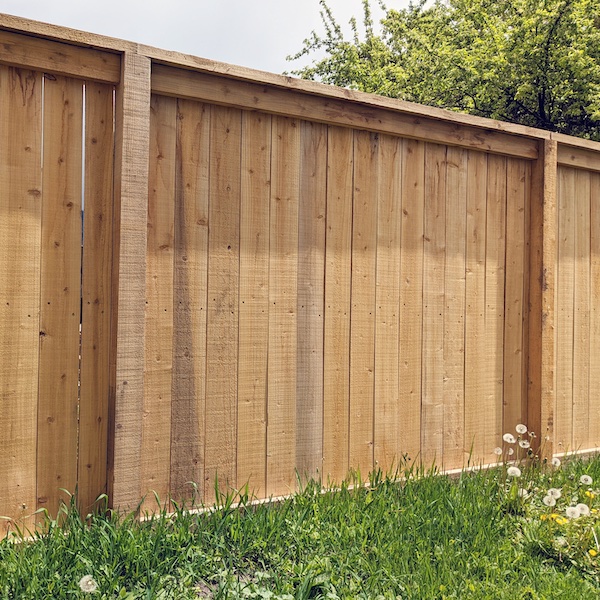All Categories
Featured
Your fencing is subjected to different climate condition year-round, and while it serves as a vital part of your home, it's additionally one of the most prone elements when it concerns weather-related damages. Severe winds, hefty rain, severe temperatures, and UV exposure can all take a toll on your fence's integrity, causing put on and tear. There are a couple of steps you can take to safeguard your fence and prolong its lifespan. Here are some efficient approaches to safeguard your fencing from weather-related damages.
Wooden Fencings: While wood is a traditional choice for secure fencing, it is at risk to bug, rot, and warping damages, particularly in areas with high moisture. Pressure-treated timber or cedar is more sturdy, however routine upkeep is vital to maintain it in great condition. Vinyl Secure fencing: Vinyl is an outstanding option for those looking for a weather-resistant and low-maintenance fencing. It's resistant to moisture, won't warp or split in the warm, and resists fading from UV rays. Metal Fence: Wrought iron and light weight aluminum are sturdy materials for fence, but they call for a rust-resistant covering to safeguard them from corrosion because of dampness. A safety covering or regular upkeep can stop rust and expand the life of steel fencings. Compound Secure Fencing: Made from a blend of timber fibers and plastic, composite fences are highly resistant to weather elements, consisting of dampness, warmth, and UV rays. This product offers a balance of durability and visual appeal. Picking a product suited to your environment will give better defense for your fence the long-term.
Seal or Discolor the Timber: Applying a high-grade sealer or discolor to your wood fence develops a water-proof obstacle that prevents moisture from going into the timber. It additionally helps protect the wood from UV rays, which can cause discoloration and drying out. Reapply Sealer On a regular basis: In time, the safety barrier of your sealant or tarnish can put on down. Relying on your environment, it's an excellent idea to reapply every one to 2 years to keep the timber protected. This therapy will certainly preserve the fencing's look, avoid rot, and prolong its lifespan.
![]()
For extra protection, consider utilizing wind-resistant mesh screens or panels in locations where wind is a significant concern. This added layer can help lessen the pressure that the wind puts in on your fencing.
Check Drainage: Make sure that the ground around your fencing slopes away from the messages. Proper water drainage enables water to stream away from the fence, preventing wetness buildup. Install Drain Equipments: In locations where drain is an issue, think about adding a French drain or gravel around the base of your fencing articles to reroute water away from the framework. Good water drainage can avoid rot, rust, and various other types of weather-related damage.
![]()
![]()
Concrete Footings: Set fence messages in concrete to avoid them from loosening up over time due to dirt erosion or shifting ground. Steel Dental Braces: Including steel dental braces to fence articles can provide added stamina and lower the threat of damaging or leaning. Enhancing your posts ensures that your fence will remain in place, also during serious weather condition.
For wood fences, carefully wash the surface with a mild cleaning agent to eliminate dirt and crud. For plastic fencings, make use of a soft fabric and cleansing remedy to avoid build-up. For steel fences, evaluate for corrosion and sand it off before using a fresh coat of paint. Final thought. Your fence is a vital feature of your home, and with the ideal treatment, it can endure the difficulties positioned by the weather condition. By selecting durable materials, doing normal upkeep, and strengthening weak points, you can protect your fence from the aspects and expand its life. Regular examinations, using protective finishes, and taking steps to manage wetness and wind exposure will help make sure that your fence stays solid, practical, and appealing for years to find.
- Select Weather-Resistant Products. The products you select for your fence can have a significant influence on its capacity to withstand the elements. Different materials are much better furnished to take care of specific climate conditions. Here's a breakdown of how numerous products stand up against the weather:
Wooden Fencings: While wood is a traditional choice for secure fencing, it is at risk to bug, rot, and warping damages, particularly in areas with high moisture. Pressure-treated timber or cedar is more sturdy, however routine upkeep is vital to maintain it in great condition. Vinyl Secure fencing: Vinyl is an outstanding option for those looking for a weather-resistant and low-maintenance fencing. It's resistant to moisture, won't warp or split in the warm, and resists fading from UV rays. Metal Fence: Wrought iron and light weight aluminum are sturdy materials for fence, but they call for a rust-resistant covering to safeguard them from corrosion because of dampness. A safety covering or regular upkeep can stop rust and expand the life of steel fencings. Compound Secure Fencing: Made from a blend of timber fibers and plastic, composite fences are highly resistant to weather elements, consisting of dampness, warmth, and UV rays. This product offers a balance of durability and visual appeal. Picking a product suited to your environment will give better defense for your fence the long-term.
- Regularly Treat Wood Fences. If you have a wooden fence, protecting it from temperature level, dampness, and sunlight fluctuations is essential. Wood can take in wetness from rain, snow, or humidity, triggering it to rot and deteriorate. Here's just how you can shield wood fencings:
Seal or Discolor the Timber: Applying a high-grade sealer or discolor to your wood fence develops a water-proof obstacle that prevents moisture from going into the timber. It additionally helps protect the wood from UV rays, which can cause discoloration and drying out. Reapply Sealer On a regular basis: In time, the safety barrier of your sealant or tarnish can put on down. Relying on your environment, it's an excellent idea to reapply every one to 2 years to keep the timber protected. This therapy will certainly preserve the fencing's look, avoid rot, and prolong its lifespan.

- Install Windbreaks. Solid winds can cause considerable damage to fences, particularly those made of lightweight products or tall structures. These all-natural barriers can assist disperse wind, preventing direct gusts from harming your fence.
For extra protection, consider utilizing wind-resistant mesh screens or panels in locations where wind is a significant concern. This added layer can help lessen the pressure that the wind puts in on your fencing.
- Make Sure Proper Drain Around Your Fencing. Standing water is one of the leading reasons of fencing damages, especially for wooden fences. Water can weaken the fence articles, creating them to rot and wear away faster. To avoid this:
Check Drainage: Make sure that the ground around your fencing slopes away from the messages. Proper water drainage enables water to stream away from the fence, preventing wetness buildup. Install Drain Equipments: In locations where drain is an issue, think about adding a French drain or gravel around the base of your fencing articles to reroute water away from the framework. Good water drainage can avoid rot, rust, and various other types of weather-related damage.

- Trim Overhanging Branches and Vines. Overhanging tree branches and creeping plants can trigger damages to your fence during storms or high winds. To protect your fencing, cut any kind of branches or plants that hang over or near the fence on a regular basis.
- Reinforce Fence Posts. Fencing posts are at risk to moving, leaning, and decaying, especially throughout periods of extreme weather. If your fencing is in an area that freezes or experiences high winds throughout winter season, it's crucial to enhance the posts to preserve security.

Concrete Footings: Set fence messages in concrete to avoid them from loosening up over time due to dirt erosion or shifting ground. Steel Dental Braces: Including steel dental braces to fence articles can provide added stamina and lower the threat of damaging or leaning. Enhancing your posts ensures that your fence will remain in place, also during serious weather condition.
- Normal Inspections and Upkeep. Routine evaluations are important for recognizing very early indicators of weather-related damages. Check your fence after storms or heavy rain to look for issues such as loose boards, sagging messages, or rusted areas. Early detection of small issues can conserve you from expensive repair work later. Furthermore, cleansing your fencing periodically assists keep its condition. :
For wood fences, carefully wash the surface with a mild cleaning agent to eliminate dirt and crud. For plastic fencings, make use of a soft fabric and cleansing remedy to avoid build-up. For steel fences, evaluate for corrosion and sand it off before using a fresh coat of paint. Final thought. Your fence is a vital feature of your home, and with the ideal treatment, it can endure the difficulties positioned by the weather condition. By selecting durable materials, doing normal upkeep, and strengthening weak points, you can protect your fence from the aspects and expand its life. Regular examinations, using protective finishes, and taking steps to manage wetness and wind exposure will help make sure that your fence stays solid, practical, and appealing for years to find.
Latest Posts
Discover Save Big on Car Maintenance with Montclare Auto Repair’s Special Deals
Published May 24, 25
1 min read
Experience Your Financial Partner at WyHy – Wyoming’s Best Banking Choice for Your Money Goals
Published May 24, 25
1 min read
Discover WyHy Federal Credit Union – Financial Freedom for Your Goals
Published May 24, 25
1 min read
More
Latest Posts
Discover Save Big on Car Maintenance with Montclare Auto Repair’s Special Deals
Published May 24, 25
1 min read
Experience Your Financial Partner at WyHy – Wyoming’s Best Banking Choice for Your Money Goals
Published May 24, 25
1 min read
Discover WyHy Federal Credit Union – Financial Freedom for Your Goals
Published May 24, 25
1 min read